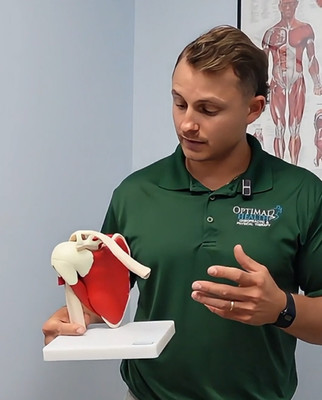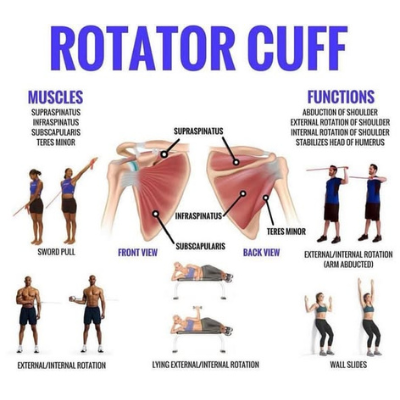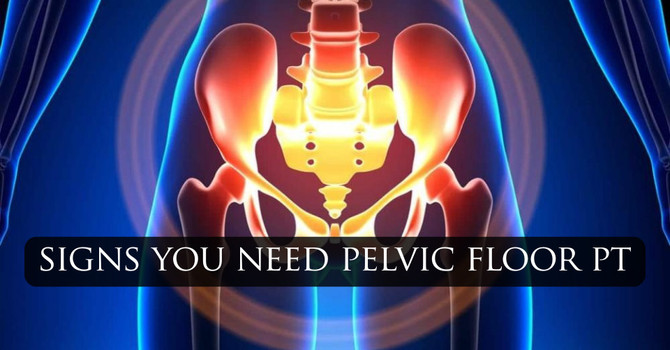
That nagging ache in your shoulder—you know the one. Maybe you feel it when reaching for something on a high shelf, lifting weights at the gym, or even just sitting at your desk. It’s easy to dismiss this early shoulder pain as a minor annoyance, something that will go away on its own. But ignoring that initial signal is a mistake that can lead to a much bigger problem: a rotator cuff injury.
Many people try to push through the discomfort, hoping for the best. Unfortunately, what starts as a small twinge can progress from inflammation to a full-blown tear that sidelines you from your daily activities and passions. This guide explains why you should take early shoulder pain seriously and outlines the steps for effective shoulder pain treatment in South Jersey to keep you moving freely and without limitations.
What is the Rotator Cuff?
Before we dive into injuries, let's understand the anatomy. The rotator cuff isn't a single part but a group of four muscles and their tendons that surround your shoulder joint. Think of them as a "cuff" that holds the top of your upper arm bone (the humerus) securely in the shallow socket of your shoulder blade.
These muscles are essential for nearly every arm movement you make. They allow you to lift your arm, rotate it inwards and outwards, and provide the stability needed for everything from throwing a ball to carrying groceries. When this system is compromised, even the simplest tasks can become painful and difficult.
Want to understand more about the rotator cuff and which muscle is most commonly injured? Watch Dr. Paul on YouTube as he explains the supraspinatus—why it’s so often affected by shoulder injuries, how posture and certain movements contribute to the problem, and what happens when the muscle is repeatedly compressed.
Watch Dr. Paul’s explanation of the most commonly injured rotator cuff muscle on YouTube.

Common Causes of Shoulder Pain and Rotator Cuff Injuries
Shoulder problems can develop for many reasons, often stemming from a combination of factors related to our jobs, hobbies, and daily habits.
Key Risk Factors
- Repetitive Overhead Movements: Activities common in sports like swimming, baseball, and tennis, or occupations like painting and construction, place constant stress on the shoulder.
- Poor Posture: Desk workers often develop rounded shoulders and a forward head posture. This position narrows the space in the shoulder joint, increasing the risk of tendons getting pinched.
- Heavy Lifting: Improper form or lifting something too heavy can cause an acute strain or tear in the rotator cuff muscles or tendons.
- Aging: As we get older, blood supply to the rotator cuff can decrease. This natural degeneration makes the tendons more susceptible to wear, tear, and injury.
- Acute Injury: A fall onto an outstretched arm or a sudden, forceful movement can cause an immediate rotator cuff injury.
The Progression: From Annoyance to Injury
Ignoring the warning signs allows a small issue to snowball. The progression of an untreated shoulder problem often follows a predictable, damaging path.
Stage 1: Inflammation and Tendonitis
It begins with irritation. Repetitive strain or minor trauma causes the rotator cuff tendons to become inflamed, a condition known as tendonitis. You might feel a dull ache in your shoulder, especially with overhead activities.
Stage 2: Impingement Syndrome
If the irritation continues, the tendons can swell. In a shoulder joint already compromised by poor posture, this swelling leads to impingement, where the tendons are repeatedly pinched between the bones of the shoulder. The pain becomes sharper and more frequent.
Stage 3: Partial Tears
Constant impingement and inflammation weaken the tendons. Eventually, the tendon fibers begin to fray and tear, resulting in a partial-thickness tear. At this stage, you may experience significant pain, weakness, and loss of motion.
Stage 4: Full-Thickness Tears
If left unaddressed, a partial tear can worsen until the tendon tears completely away from the bone. This is a full-thickness tear, a serious rotator cuff injury that often causes severe pain, major weakness, and an inability to lift the arm.
How to Treat Shoulder Pain and Prevent Progression
The good news is that with the right intervention, you can stop this progression and find lasting relief. Treatment will depend on the severity of your injury.
Conventional options often include rest, anti-inflammatory medications, and in some cases, corticosteroid injections to manage pain. While these can provide temporary relief, they don’t address the root cause of the problem—the faulty mechanics and muscular imbalances that led to the injury in the first place. Surgery is typically reserved as a last resort for complete tears.
The Role of Chiropractic Care and Physical Therapy
A comprehensive approach combining chiropractic care for shoulder pain and physical therapy is one of the most effective ways to treat the underlying issue. At our clinics, we focus on restoring function, not just masking symptoms.
- Accurate Diagnosis: We start with a thorough assessment to identify which structures are involved and what movement patterns are contributing to the pain.
- Improving Joint Mobility: Chiropractic adjustments can help restore proper motion to the joints in the shoulder, neck, and upper back, which are often stiff and restricted.
- Soft Tissue Work: Techniques like Active Release Technique (ART) or Graston are used to break down scar tissue and release tension in the tight muscles around the shoulder, improving flexibility.
- Corrective Exercises: This is a critical component. A customized plan of rotator cuff exercises will help strengthen the weak muscles, stabilize the shoulder joint, and correct the imbalances that caused the problem.
Rehab Exercises for a Healthy Shoulder
A targeted exercise program is essential for recovery and prevention. The goal is to strengthen the rotator cuff and the supporting muscles of the upper back and shoulder blade. Always perform these movements without pain.
Here are a few foundational rotator cuff exercises:
- Wall Push-Ups: Stand facing a wall with your hands flat against it, slightly wider than your shoulders. Keeping your body straight, bend your elbows to bring your chest toward the wall, then press back to the start. Focus on how your shoulder blades move.
- Doorway Stretch: Stand in a doorway and place your forearms on the frame with your elbows slightly below your shoulders. Step forward gently until you feel a stretch across your chest. This helps counteract rounded shoulders. Hold for 30 seconds.
- External Rotation with Band: Anchor a resistance band at elbow height. Stand sideways to the anchor point, holding the band with your far hand. Keep your elbow tucked at your side at a 90-degree angle and pull the band away from your body, rotating your shoulder outward.
- Rows with Band: Anchor a resistance band in front of you. Hold the band with both hands and pull it back toward your chest, squeezing your shoulder blades together. This strengthens the important muscles of your upper back.

When to Seek Professional Help
Don't wait for the pain to become unbearable. You should seek professional care if:
- Your shoulder pain lasts for more than a week.
- The pain interferes with your sleep or daily activities.
- You feel weakness or instability in your shoulder.
- You experience a "clicking" or "popping" sensation with movement.
Acting early can be the difference between a few weeks of conservative care and months of recovery from a major tear or surgery.
Take Control of Your Shoulder Health Today
Your shoulders are involved in almost everything you do. Protecting them is key to maintaining an active and pain-free life. If you're experiencing any level of shoulder pain, the time to act is now.
Don’t let a small problem turn into a lifelong issue. Schedule a shoulder mobility and rotator cuff assessment at Optimal Health Chiropractic and Physical Therapy. Our expert teams in Egg Harbor Township and Washington Township are ready to provide the effective shoulder pain treatment you need to get back to doing what you love.




